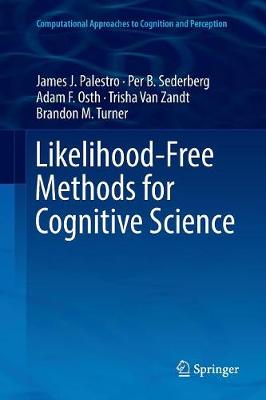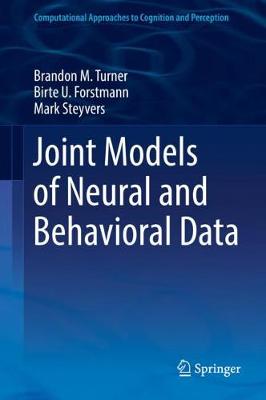Computational Approaches to Cognition and Perception
2 total works
Likelihood-Free Methods for Cognitive Science
by James J. Palestro, Per B. Sederberg, Adam F. Osth, Trisha Van Zandt, and Brandon M. Turner
This book explains the foundation of approximate Bayesian computation (ABC), an approach to Bayesian inference that does not require the specification of a likelihood function. As a result, ABC can be used to estimate posterior distributions of parameters for simulation-based models. Simulation-based models are now very popular in cognitive science, as are Bayesian methods for performing parameter inference. As such, the recent developments of likelihood-free techniques are an important advancement for the field.
Chapters discuss the philosophy of Bayesian inference as well as provide several algorithms for performing ABC. Chapters also apply some of the algorithms in a tutorial fashion, with one specific application to the Minerva 2 model. In addition, the book discusses several applications of ABC methodology to recent problems in cognitive science.
Likelihood-Free Methods for Cognitive Science will be of interest to researchers and graduate students working in experimental, applied, and cognitive science.
Joint Models of Neural and Behavioral Data
by Brandon M. Turner, Birte U. Forstmann, and Mark Steyvers
This book presents a flexible Bayesian framework for combining neural and cognitive models. Traditionally, studies in cognition and cognitive sciences have been done by either observing behavior (e.g., response times, percentage correct, etc.) or by observing neural activity (e.g., the BOLD response). These two types of observations have traditionally supported two separate lines of study, which are led by two different cognitive modelers. Joining neuroimaging and computational modeling in a single hierarchical framework allows the neural data to influence the parameters of the cognitive model and allows behavioral data to constrain the neural model. This Bayesian approach can be used to reveal interactions between behavioral and neural parameters, and ultimately, between neural activity and cognitive mechanisms. Chapters demonstrate the utility of this Bayesian model with a variety of applications, and feature a tutorial chapter where the methods can be applied to an example problem. The book also discusses other joint modeling approaches and future directions.
Joint Models of Neural and Behavioral Data will be of interest to advanced graduate students and postdoctoral candidates in an academic setting as well as researchers in the fields of cognitive psychology and neuroscience.

